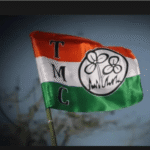Hijab Law a Rising Movement the second anniversary of Mahsa Amini’s death approaches, a quiet yet significant revolution is unfolding on the streets of Iran. More and more women are defying the mandatory hijab law, choosing to walk the streets of Iranian cities without the headscarf that has long been a symbol of the country’s strict dress code for women. This act of resistance, seemingly small but immensely powerful, signifies a growing movement for personal freedom and human rights in a nation known for its rigid religious laws and conservative values.
The death of 22-year-old Mahsa Amini in September 2022, after being detained by the morality police for allegedly violating the hijab rule, sparked outrage and led to widespread protests across Iran and the globe. Her death became a symbol of the systemic oppression faced by Iranian women under the Islamic Republic’s mandatory hijab laws. As the second anniversary of her tragic death nears, Iranian women continue to defy these laws, risking arrest and harassment in their pursuit of personal freedom and gender equality.
This article examines the evolving dynamics of the hijab protests, the significance of Mahsa Amini’s legacy, and what this growing defiance means for the future of women’s rights in Iran.
The Legacy of Mahsa Amini: A Turning Point
Mahsa Amini’s death was a watershed moment in Iran’s struggle for women’s rights. Arrested by the morality police for allegedly wearing her hijab improperly, Amini’s death in police custody set off a wave of protests, both within Iran and globally. The government’s initial attempts to suppress these protests through force only intensified the public’s outrage, leading to the largest civil unrest the country had seen in years.
Amini became a symbol of resistance not just against the hijab law, but against the broader oppression of women in Iran. The protests called for the dismantling of laws that infringe on women’s rights, including the mandatory hijab, restrictions on education and employment, and the systemic discrimination women face in legal matters, such as inheritance, divorce, and custody of children.
Over time, these protests evolved beyond the streets and entered the everyday lives of Iranian women. Quiet acts of defiance—like walking in public without a headscarf—became a form of protest, a way to resist the state’s control over their bodies and lives.
The Mandatory Hijab Law: A History of Control
The mandatory hijab law in Iran was introduced after the 1979 Islamic Revolution. Under the new Islamic regime, led by Ayatollah Khomeini, the country adopted a set of conservative religious laws, including compulsory veiling for women. Women were required to cover their hair and bodies in public spaces, and the morality police were tasked with enforcing these laws.
For decades, Iranian women have navigated this strict dress code, some adhering to it voluntarily due to personal or religious beliefs, while others complied out of fear of punishment. The punishment for not wearing the hijab ranges from fines and warnings to arrests, physical harassment, and even imprisonment. The morality police have played a central role in enforcing the dress code, often through violent and humiliating methods, which have been a source of deep resentment among Iranian women.
Despite the severe consequences, women in Iran have always found ways to push back against the hijab law. Many have worn their headscarves loosely, revealing strands of hair, or opted for more fashionable interpretations of modest clothing. However, the movement that has gained momentum in recent years—particularly after Mahsa Amini’s death—goes beyond subtle acts of resistance. Women are now oenly walking in public without the hijab, risking arrest and violence, but refusing to conform to a law they view as oppressive and archaic.  For the more information click on this link
For the more information click on this link
The Role of Social Media: Amplifying the Movement
Social media has played a critical role in amplifying the hijab protests and bringing global attention to the issue. Following Mahsa Amini’s death, images and videos of protests, police crackdowns, and acts of defiance were shared widely across platforms like Twitter, Instagram, and Telegram. These platforms have allowed Iranian women to share their stories, document their resistance, and gain solidarity from people around the world.
The hashtag #MahsaAmini became a rallying cry for the movement, trending globally as people expressed their support for the protests. International media outlets picked up on the growing unrest, putting pressure on the Iranian government to address the issue.
Social media has also provided a space for women to organize and mobilize. Groups like “My Stealthy Freedom” and “White Wednesdays,” which encourage women to share photos of themselves without the hijab, have garnered thousands of followers. These online campaigns have emboldened women to take their protest from the virtual space to the streets, despite the government’s efforts to suppress online dissent by restricting internet access and banning certain platforms.
Government Crackdown: A Struggle for Control
In response to the growing defiance, the Iranian government has intensified its crackdown on women who refuse to wear the hijab. The morality police, who were initially disbanded following Mahsa Amini’s death due to public outcry, were reactivated in 2023 to enforce the hijab law more strictly. Women caught without a headscarf face the risk of arrest, fines, and even violence. In some cases, security forces have used tear gas and batons to disperse crowds of protesters.
The government’s efforts to reassert control have also extended to the judiciary. In July 2023, Iran passed new laws aimed at punishing women who violate the hijab mandate, including harsher penalties like revoking driving licenses, prohibiting access to education and employment, and banning travel. These laws reflect the regime’s fear of losing control over a populace that is increasingly challenging the religious and moral authority upon which it is built.
Yet despite these harsh measures, women continue to resist. The more the government tries to enforce the hijab, the more it becomes a symbol of oppression in the eyes of many Iranians. The women who walk the streets without a headscarf are no longer just violating a dress code—they are openly defying the state’s control over their bodies and lives.
A Broader Struggle for Freedom: Beyond the Hijab
While the hijab is a focal point of the current protests, the movement extends far beyond the issue of veiling. Iranian women are demanding broader freedoms, including the right to make choices about their own lives, bodies, and futures. They are challenging a system that limits their participation in public life, restricts their legal rights, and subjects them to systemic discrimination.
In many ways, the movement for women’s rights in Iran is intertwined with a broader struggle for democracy and human rights. Many Iranians, both men and women, are calling for an end to the authoritarian rule of the Islamic Republic. The protests, which began with women challenging the hijab, have evolved into a broader resistance movement against the government’s repression, corruption, and economic mismanagement.
The movement has also seen the solidarity of Iranian men, who have joined protests and shown support for the rights of women. This unity is a testament to the growing recognition that the fight for women’s rights is a fight for the freedom of all Iranians.  For the more information click on this link
For the more information click on this link
The International Response: Global Solidarity and Pressure
The international community has largely expressed solidarity with Iranian women, with governments, human rights organizations, and activists calling for an end to the mandatory hijab law and the broader repression of women in Iran. Countries like the United States and members of the European Union have imposed sanctions on Iranian officials responsible for human rights abuses, including those linked to the enforcement of the hijab mandate.
International organizations like Amnesty International and Human Rights Watch have documented the Iranian government’s abuses against women and protesters, urging global leaders to take stronger action against the regime. The United Nations has also called for investigations into the deaths of protesters and the systemic violence against women in Iran.
However, while international pressure has raised awareness of the plight of Iranian women, meaningful change can only come from within the country. The resilience and bravery of Iranian women—who continue to defy the hijab law despite the risks—are what will ultimately determine the success of the movement.
Looking Forward: The Future of the Hijab Protests
As the second anniversary of Mahsa Amini’s death approaches, it is clear that her legacy has sparked a movement that cannot easily be extinguished. Iranian women are at the forefront of a larger struggle for freedom and equality, one that challenges not only the mandatory hijab law but the very foundations of the Islamic Republic’s control over society.
The defiance of Iranian women—whether through large-scale protests or small, everyday acts of resistance—has sent a powerful message to the government and the world. It is a reminder that the desire for freedom, dignity, and equality cannot be silenced, no matter how repressive the regime.
The road ahead is fraught with challenges. The Iranian government has shown that it is willing to use violence and legal measures to suppress dissent. But the courage of the women who continue to resist, despite these dangers, offers hope for a future in which personal freedom and human rights are respected in Iran.
Conclusion: Mahsa Amini’s Enduring Legacy
Mahsa Amini’s death has become a turning point in Iran’s struggle for women’s rights and freedom. As the second anniversary of her passing approaches, the growing defiance of the mandatory hijab law reflects the broader fight for equality, justice, and freedom in the country. Iranian women, emboldened by Amini’s legacy, are challenging the state’s control over their lives and bodies, refusing to submit to oppressive laws that seek to limit their choices.
While the road to change is long and fraught with obstacles, the women of Iran have shown remarkable resilience and determination. Their defiance is not just about the hijab—it is about reclaiming their autonomy, dignity, and place in society. As the world watches, the future of Iran’s women’s movement remains uncertain, but one thing is clear: the spirit of resistance, sparked by Mahsa Amini, will continue to inspire and drive the struggle for equality in Iran and beyond. ALSO READ:- Ford Motor Company to Re-enter Tamil Nadu: A Strategic Move to Strengthen India’s Auto Sector2024




